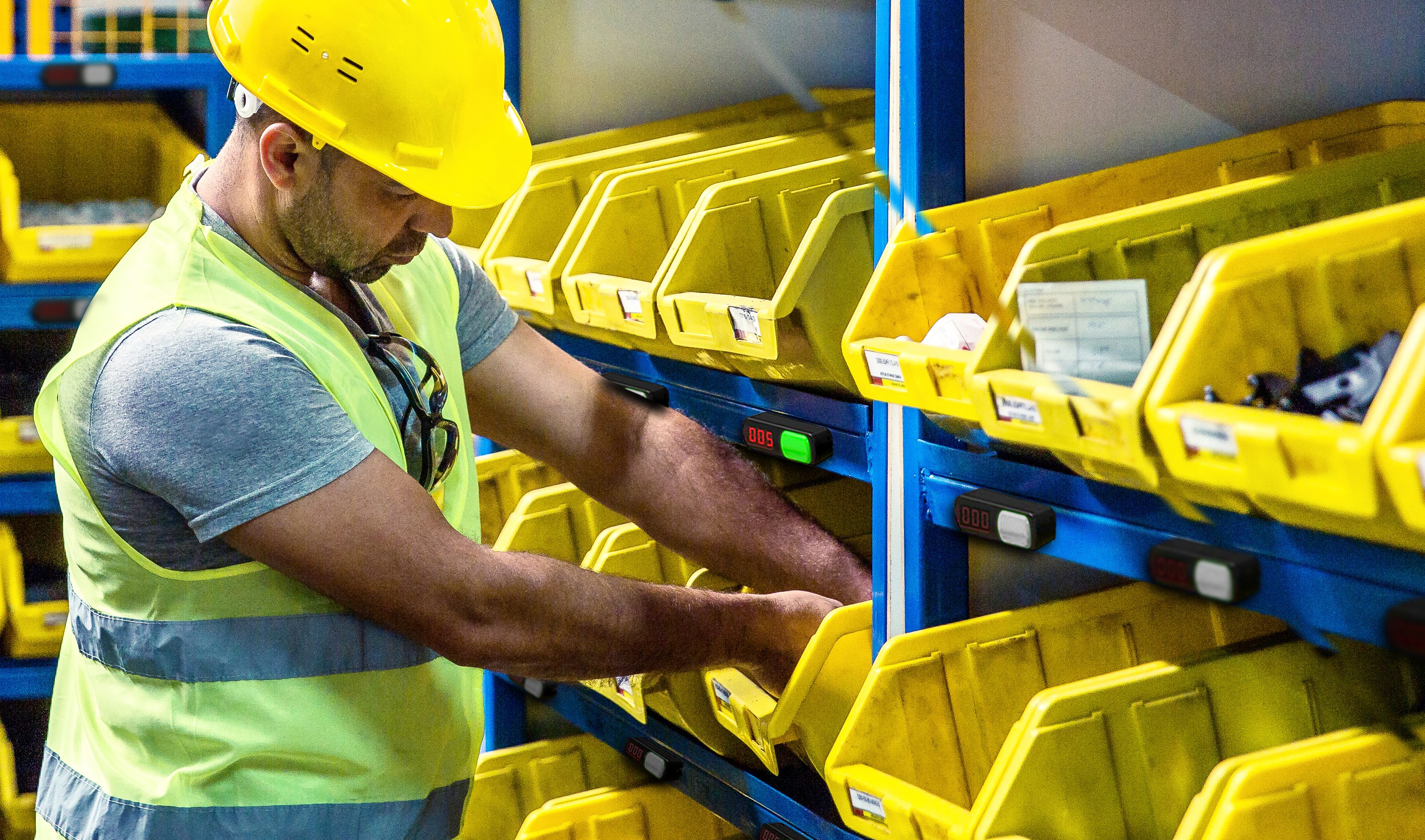Poka-yoke Your Manufacturing Operations
by Jason Bullard, on Aug 28, 2023 11:58:06 AM
.jpg?width=6000&height=4000&name=eFlex_Pick_Task_with_PTL110_(3).jpg)
Poka-yoke is a Japanese term for mistake-proofing, derived from the Japanese words yokeru (avoid) and poka (mistakes). Famously popularized by the influential Toyota Production System, poka-yoke refers to any mechanism that can help operators prevent the kind of avoidable human errors that lead to inefficiency and potentially costly quality and safety issues. The downstream impact of those issues can be enormous, with possible implications not just for productivity, but for compliance and brand perception.
The value of poka-yoke is not necessarily that it's a novel idea, so much as that it helps draw attention to the detailed-oriented and sometimes even mundane elements of error-proofing that can make a tremendous bottom-line difference in outcomes and profit margins. Poka-yoke is ultimately about process: systematically refining and reimagining each element of production to make operator tasks easier and more intuitive while minimizing opportunities for mistakes.
The good news is that poka-yoke doesn’t necessarily have to be expensive or complicated. In many cases, it’s surprisingly uncomplicated: the application of logical steps that streamline and clarify operator tasks. For example, if an operator needs to select one of two similarly sized bolts at a specific step in an assembly process, one way to minimize the chances that they select the wrong bolt is to separate and clearly label the bins where those bolts are located.
While this kind of sensible poka-yoke can be very beneficial, the advent of the suite of technologies that deliver connected process control systems has radically enhanced manufacturers’ ability to deploy and assess poka-yoke measures that can have a profoundly positive impact. Sophisticated digital process control capabilities and the embedded quality management systems of a modern MES not only unlock new poka-yoke opportunities, they enable adopters to quickly evaluate the efficacy of new error-proofing changes and optimize production processes. The combination of digital work instructions, operator guidance tools, and connected/integrated tooling opens up a new universe of poka-yoke opportunities.
It also facilitates a concept captured in another Japanese term: kaizen, or continuous improvement. In the simple bolt example outlined above, kaizen dictates that you continue to refine and improve the process to make it quicker, more efficient, and less prone to mistakes. Instead of simply moving the bolt bins further apart, perhaps you subsequently add a pick light to highlight the correct bin at each stage in the assembly process. And perhaps you take it a step further: adding sensors that can detect if/when the operator’s hand has reached into the bin to select the right part. Instead of a hypothetical, this is representative of the process a client went through in applying the principles of poka-yoke and kaizen to their production process. For the process in question, operators originally had to pick between 15 and 20 parts from a large number of bins for each kit. To confirm they had the correct part, operators would have to cross-check part numbers between their pick list and the bin labels. Now, pick lights automatically illuminate in front of every bin on a part list, and once the operator retrieves the part, the light turns off. What once took 20-30 minutes and was prone to errors and mistakes is a virtually mistake-proof process that can now be completed in about three minutes.

With connected process control systems, manufacturers can not only implement this kind of poka-yoke, but they can also quickly and accurately evaluate operator performance and results to identify increases in quality and throughput. Without those measurables and analytics on the back end, it becomes a kind of guessing game. Real-time visibility and analytical precision, however, makes continuous improvement initiatives possible.
Perhaps most exciting of all is the fact that the affordability and scalability of these systems makes this kind of effective and sophisticated poka-yoke accessible to smaller manufacturers. Unlike the comparatively cumbersome, costly, and complex systems of the past, which were hardware-dependent custom-coded, the no-code or low-code nature of the best-connected process control solutions means they can be easily configured. As a result, manufacturers can start small and build until their poka-yoke efforts are effective. In the process, they aren’t just setting up their operators for success, they are carving out a defining competitive advantage.
.png?width=600&height=120&name=Kitting%20CTA%20(1).png)